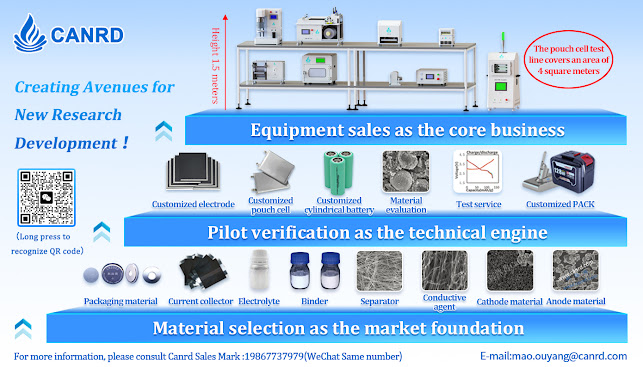Interfacial friction makes the vertical structure of lithium metal batteries
summary
A practical high-energy-density lithium metal battery requires a free-standing lithium metal anode with a thickness of less than 20 μm, but it is difficult to achieve large-scale processing of thin layers and free-standing structures due to the low melting point and strong diffusion creep effect of lithium metal. In this study, a free-standing lithium chips with a thickness of 5 to 50 μm was formed on the lithium metal surface by mechanical rolling, which was determined by the in-situ tribochemical reaction between lithium and zinc dialkyl dithiophosphate (ZDDP). A layer of organic/inorganic hybrid interface (about 450 nm) was formed on the lithium metal surface with extremely high hardness (0.84 GPa) and Young's modulus (25.90 GPa), which not only enables scalable processing of lithium chips, but also realizes dendrite-free lithium metal anode by inhibiting dendrite growth. The rolled lithium anode has a long cycle life and high-rate cycling stability ( more than 1700 cycles at 25°C even at current densities of 18.0 mA cm −2 and 1.5 mA cm −2 ). This work provides a scalable tribological design approach for producing practical thin free-standing lithium metal anodes.
introduce
Lithium-ion batteries (LIBs) have been widely used in consumer electronics, electric vehicles, and grid-level energy storage systems. In order to meet the growing market demand, it is urgent to break through the energy density bottleneck of LIBs by adopting advanced electrode materials .Lithium chips is considered to be the ultimate high-energy density anode material with a theoretical specific capacity of up to 3860mAh/g -1 and an extremely low reduction potential of -3.04V, which is expected to replace the traditional graphite anode used in commercial LIBs with a theoretical specific capacity of only 372mAh/g -1 . However, lithium metal anodes unfortunately suffer from volume fluctuations, dendrite growth, and side reactions with the electrolyte .
Progress has been made in stabilizing lithium metal anodes, but there are still some practical challenges to be addressed when matching lithium anodes with commercial cathodes. In practical applications, commercial cathodes are usually matched with lithium anodes with an area capacity of 3-10mAh/cm², which means that the thickness of lithium metal only needs to be controlled in the range of 15-50µm. Due to the low melting point of lithium, it exhibits strong diffusion creep even at room temperature. Considering the resulting viscosity and poor processing properties, large-scale production of thin lithium metal electrodes has proven difficult. Extrusion-based production processes currently use substrate lamination methods with single-sided loading thickness ranging from 20 to several hundred microns, but this leads to increased production costs. Conventional methods such as electrochemical deposition and molten lithium irrigation show high costs and risks in the preparation of thin lithium ribbons, which makes it difficult to achieve large-scale industrialization. There is an urgent need to design a new process to achieve ultra-thin processing and preparation of lithium metal and improve its performance at high current density.
Results and Discussion
Thin lithium sheets were prepared by rolling at 25 °C by adding 5% ZDDP oil mixture to mineral oil in an argon-filled glove box. The thickness of the lithium sheet can be controlled in the range of 50 μm to 5 μm through a step-by-step thinning process. In addition, ZDDP can react with lithium metal to form an organic/inorganic hybrid interface nanolayer on the lithium sheet when lithium metal is subjected to high stress. Before processing, the chemical bonding information of the pure ZDDP reagent was tested by infrared spectroscopy, and strong POC vibrations in the spectral region from 920 to 1200 cm −1 were observed . The high chemical activity of lithium itself can produce a compressive and anti-wear film by high stress loading at room temperature. The contact pressure can catalytically decompose ZDDP. At the same time, sulfur penetration occurred. The cross-sectional profile of Li@ZDDP was observed by cryo-transmission electron microscopy, and elemental mapping of P, S and Zn was drawn. It can be observed that the thickness of the in-situ formed organic/inorganic interface layer is about 450 nm, which can be semi-quantitatively determined by time-of-flight secondary ion mass spectrometry (TOF-SIMS) in Figure 1e. The top layer is an organozinc phosphate (PH2O-, where H represents a CH bond), and it can be inferred that the thickness of the organic component in the compressive and wear-resistant coating is about 200 nm. In contrast, there are no components corresponding to the Zn, P, and S elements on the bare lithium metal surface.









No comments:
Post a Comment